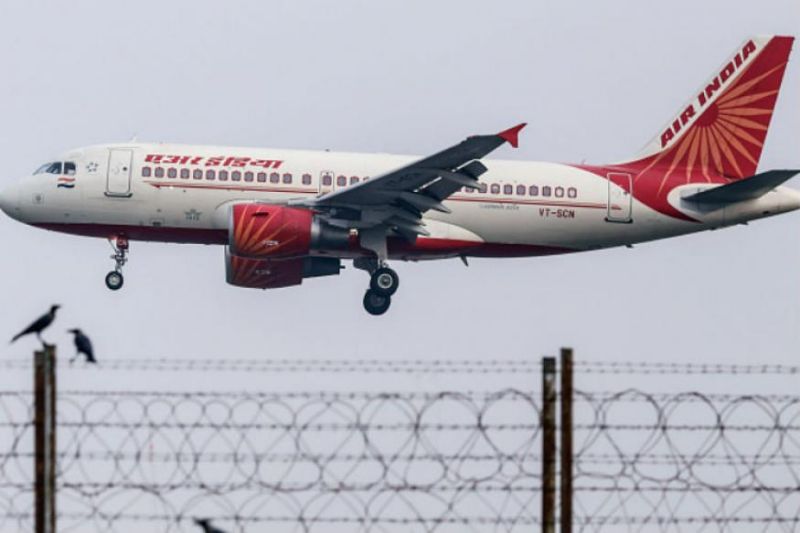It is not clear why the government wants to retain a 24 percent stake in Air India. Any holding below 26 percent is hardly of any use to a shareholder. Such a shareholder can’t stall any key board decision, including a special resolution or even a name change. There’s no need to mislead the common man on the government’s minority holding status in post-Air India stake-sale. Here’s a report, for Different Truths.
In just another three to four months’ time, the fate of India’s long preserved pride, Air India, the national carrier and ‘Maharaja’ of the sky, maybe finally decided. Who’ll be the ultimate owner of the airline? It’s a multi-million-dollar question before Air Indians. The last date for intimating the qualified ‘Interested Bidders’ of the government stand has been extended from May 28 to June 15. The civil aviation ministry has issued a ‘corrigendum’ to its earlier ‘Expression of Interest.’ Its preliminary memorandum on March 28 proposed sale of up to 76 percent stake in Air India along with management control to private entities.
It is not clear why the government wants to retain a 24 percent stake in Air India. Any holding below 26 percent is hardly of any use to a shareholder. Such a shareholder can’t stall any key board decision, including a special resolution or even a name change. There’s no need to mislead the common man on the government’s minority holding status in post Air India stake-sale. The government had recently put out clarifications for 160 questions from interested bidders on the disinvestment of Air India and its two subsidiaries – Air India Express and AISATS. A 19-page official document clarified that “individuals (other than employees) are not allowed to bid.”
This means that poor Air-India employees can bid for their beloved airline. Such a bid provision may appear to be a cruel joke on Air India’s 16,000-plus employees. “Details of existing slots and code share agreements will be provided at RFP (Request for Proposal) stage. It is expected that there will not be any impact of disinvestment on existing slots and bilateral right,” the government said. This was in response to queries on whether privatisation would impact renewal of existing slots and bilateral flying rights. For some 50-odd other queries, the government would provide the details at the RFP stage.
Surprisingly, within no time came a seemingly unsolicited advice from the Centre of Asia Pacific Aviation (CAPA). It asked the government to ease a few terms and conditions in the Expression of Interest for divestment of Air India. “It is critical that terms in the Expression of Interest, particularly for labour and debt, are amended, as the successful bidder will need to invest in restructuring and absorbing losses for several years in addition to the consideration to be paid for acquiring a 76 per cent stake,” CAPA said in a statement. It added that unless the bidders are confident that they will be ring-fenced from possible political risks, this could prove to be a key reason for possible non-participation by some parties at the RFP stage.
CAPA even went up to the extent of warning the government with its own estimate of Air India’s losses during the current and next financial years. It estimated that Air India is heading for a massive loss of $1.5-2.0 billion in FY19 and FY20. The overseas body wanted the government to sell the airline without delay. “Failure to divest could see the airline close unless the government is willing to spend taxpayer’s funds. It will be far less costly to make the offer more attractive to investors,” CAPA argued. Did the government seek CAPA’s advice for the proposed share disinvestment in Air India?
Incidentally, Air India’s current sickness has little to do with its management efficiency. It is entirely on account of political reasons championed mostly by two former civil aviation ministers under two previous governments — one led by the late Narasimha Rao and the other by Manmohan Singh. One choked Air India’s operations by inviting NRI investments in the civil aviation business. Few bothered to know clearly the financial background of those NRIs. Quizzically, the government had, at the same time, turned down a very attractive and transparent proposal by the House of Tatas, original owners of Air-India before its nationalisation, to operate a joint venture airline in cooperation with Singapore Airlines. The Tatas were so upset that they went to the extent of hiring the services of the well-know US intelligence agency, Fairfax, to unearth the incorporation document of a NRI-led airline with its questionable foreign ownership pattern. The government refused to pay any attention to the result of the Fairfax investigation. In another case, another civil aviation minister was alleged to have been behind Air India’s expensive foreign aircraft purchase decision with the help of large foreign borrowings. Air India has been finding it difficult to service this debt pile. The minister was also involved in a questionable Air-India-Indian Airlines merger decision, both state-owned, without a viable consolidation programme on board. They ultimately turned the merged entity, Air India, sick.
Given India’s presently booming air traffic trade, Air India certainly deserves the support of its owners, the government, to continue to fly as a national carrier at least for a few more years to recover from its current financial stress. Air India’s unions argue that the airline’s cost of employees and their strength are comparable with the best in the industry. According to a report, Air India has 138 aircraft and has less than 17,000 employees, compared to the market leader Indigo’s 17,000 employees for a fleet of 150-160 aircraft. Air India’s aircraft on a seat equivalent basis are larger than IndiGo’s. Few will also disagree that a distress sale of Air India is untimely.
India is witnessing a massive expansion of air traffic — both domestic and international — and foreign airlines are trying to steadily expand their services to cash in on India’s air travel boom. Last year, Air India’s revenue grew around 11 per cent. Its fiscal and physical performance parameters were highly encouraging. The national carrier also recorded 80 per cent passenger load factor in 2017-18 amid the government’s disinvestment preparation.
Nantoo Banerjee
©IPA Service
Photo from the Internet



